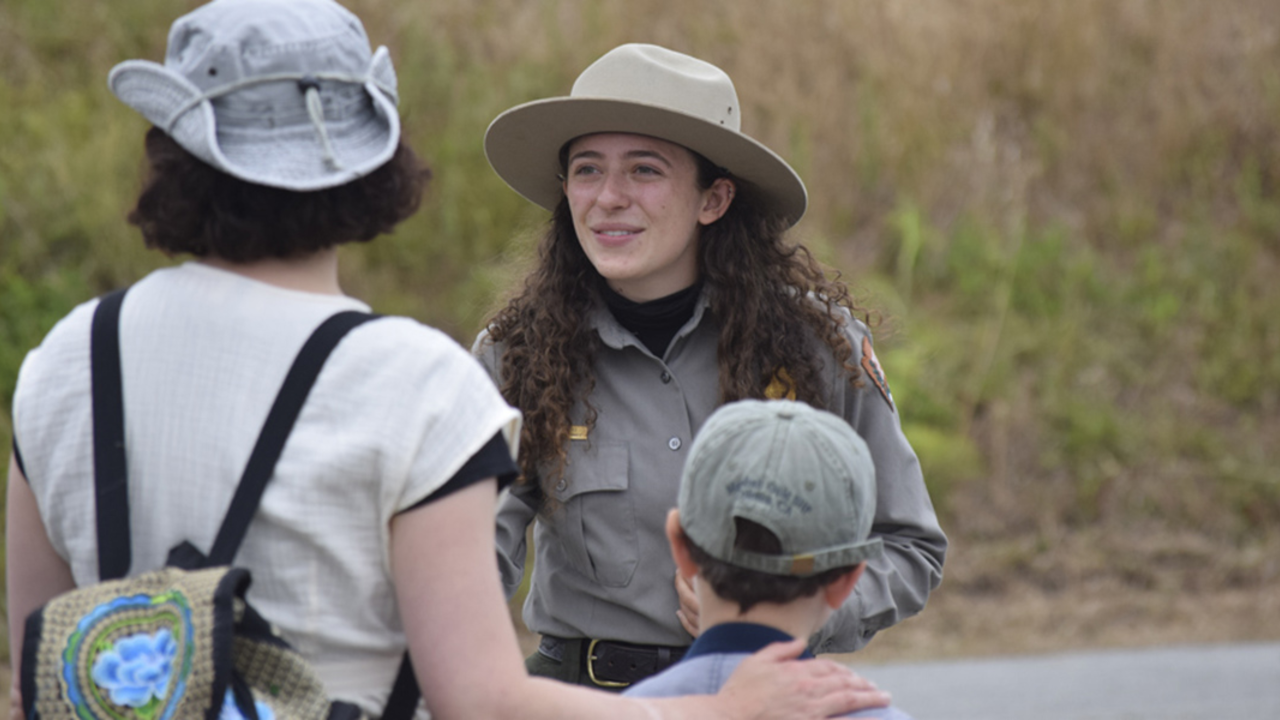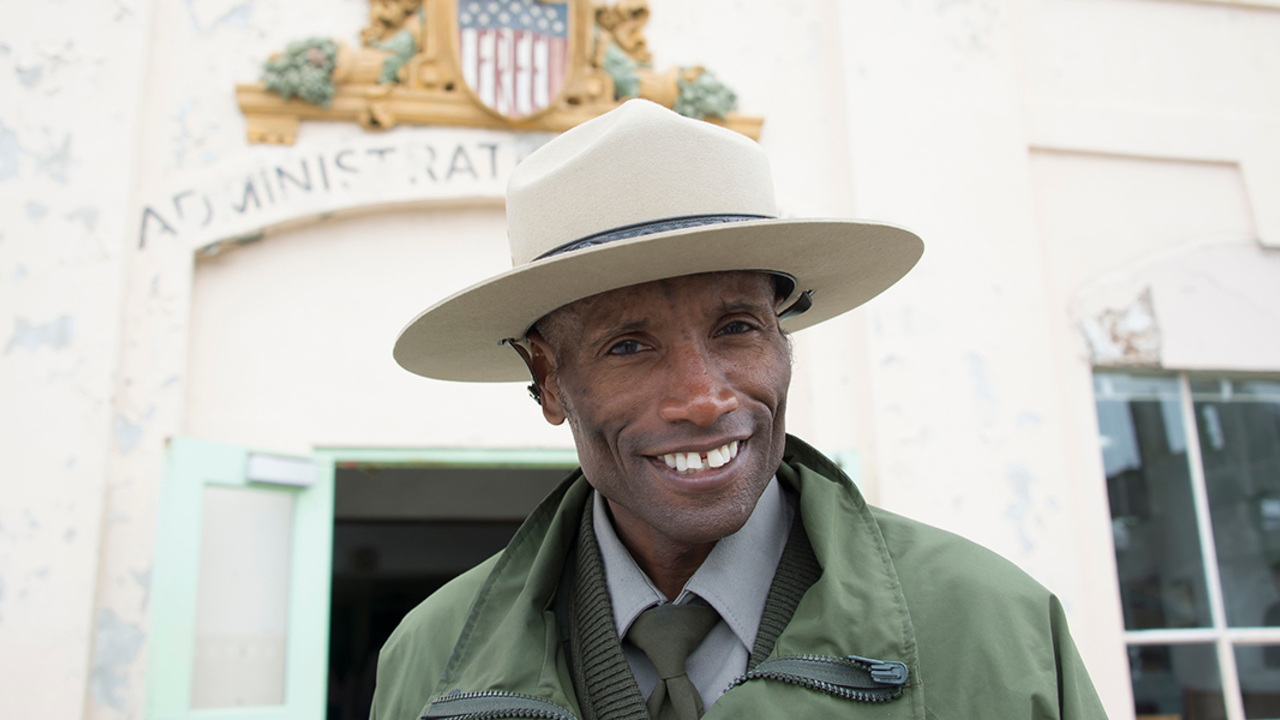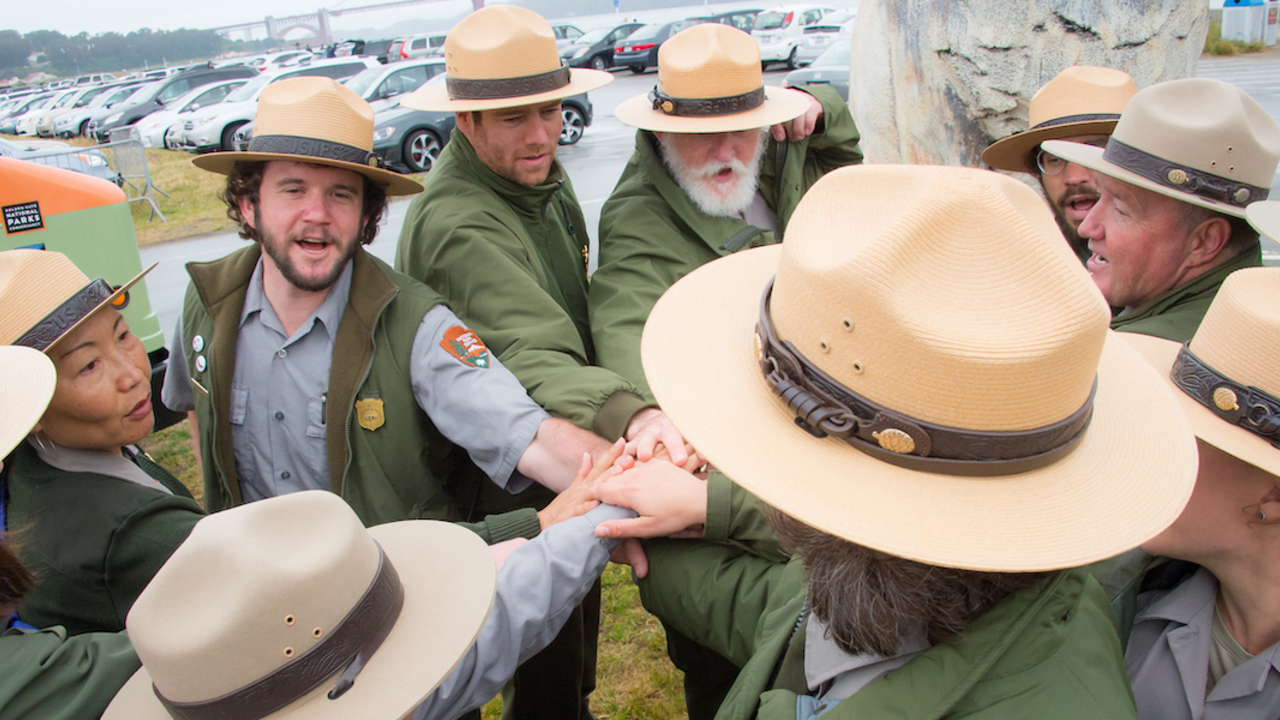Meet the Ranger: Lara Volski on climate resilience and history in the Marin Headlands

Matthew Connelly / NPS
Park Ranger Lara Volski is relatively new to the National Park Service (NPS), but she’s already made a big impact for Marin Headlands visitors.
Working at Point Bonita Lighthouse, the Nike Missile Site, and other locations, Ranger Lara talks about climate resilience and history in unique ways. She focuses on inclusivity and empowering visitors to consider their own solutions to complex problems.
How does she do it, and how did she get her start with the NPS? We sat down with her to find out.
How did you become a park ranger?
I started May of 2019. I went through the NPS Pathways Program, so that means I started while I was a college student at UC Berkeley, and then I got to continue on with my position after I graduated. I've definitely learned a lot. I think I went in with a lot of expectations. Putting on that flat hat was so exciting. I was giggling crazily. So I have to pinch myself, I don't quite believe it. And I think Golden Gate is unique in that it is really progressive.
The Marin Headlands, in comparison to the rest of the GGNRA, feels like the wild west to me. It has these wild hiking trails everywhere, and there isn’t really one central spot to it. But that means a lot of diversity to the stories we get to tell.
What stories do you like to tell in the Marin Headlands?
I work at Point Bonita Lighthouse, and there I talk a lot about navigation, both human navigation and immigration, but then also marine mammal navigation for whales and seals.
I used to work at the Marine Mammal Center, and I kind of borrowed from some of the knowledge I learned there, with domoic acid toxicosis. As we have warming seas and fertilizer runoff, we have more toxic algae in the ocean. And this travels up the food chain, so one fish eats it, a bigger fish eats that fish, it makes itself up to the top apex predators like seals, dolphins, and even humans too. It attacks the specific part in the brain, the hippocampus, that helps us remember navigation.
Point Bonita is known for its currents, so it was really difficult for humans to navigate there. But now we have animals like harbor seals that are having trouble navigating around the area because of domoic acid toxicosis. We have the whales that pass through with sound pollution, which interrupts their navigational abilities. And then, because a lot of this is impacted by climate change, you can even tie it into how do we navigate into the future with these changing things that are happening to our climate?
How do you help people process big questions around climate change?
What I'll do in programs is I print out different pictures of possible ways that they may want to navigate into the future, with all the kinds of issues I just presented before in mind. And then I let them choose the photo that best represents what they want to see our community moving towards. It's kind of cool, because you can watch all the people that are navigating around these photos, literally, to their desired solution. And that's kind of a fun way to let them be the one to say where they want to navigate to, as opposed to me saying this is where you should navigate to. If they do decide to write or draw their own ideas, I take those and I turn them into photos. So all of my photos are from what people have suggested. And it's kind of like they get to dialogue with each other through that platform, even if they aren't on the same tour.
How do you help people engage with the history of the Marin Headlands?
There are biases inherent in the way we present information. As I've been researching Coast Miwok people it's so clear, you read these mission documents, biases are always in every kind of history and every kind of story. But I think when you empower the audience to be on the same stage as you with these questions, you're learning from them as much as they're learning from you. I always try to remind people that these are their parks, they're not my parks. And I feel like that imbues them with that sense of ownership. So when it comes to these questions, anyone can answer them regardless of age, sex, ethnicity, background. They're not knowledge-based. Instead of saying, “Why do you like history?” you would say, “Do you like history?" Things like that.
I think it also helps when you're telling stories for people to dive into the minds of the characters of the park. For example, there's Lt. Susan Cheney, she was the first woman ever assigned to a combat-ready installation. She was the battery executive officer of the Nike site, and she was the first woman to do what she did. And you can ask folks, can you give me an example of when you've done something for the first time? And not only do you learn from people, but they can kind of connect themselves with her story all the better.


